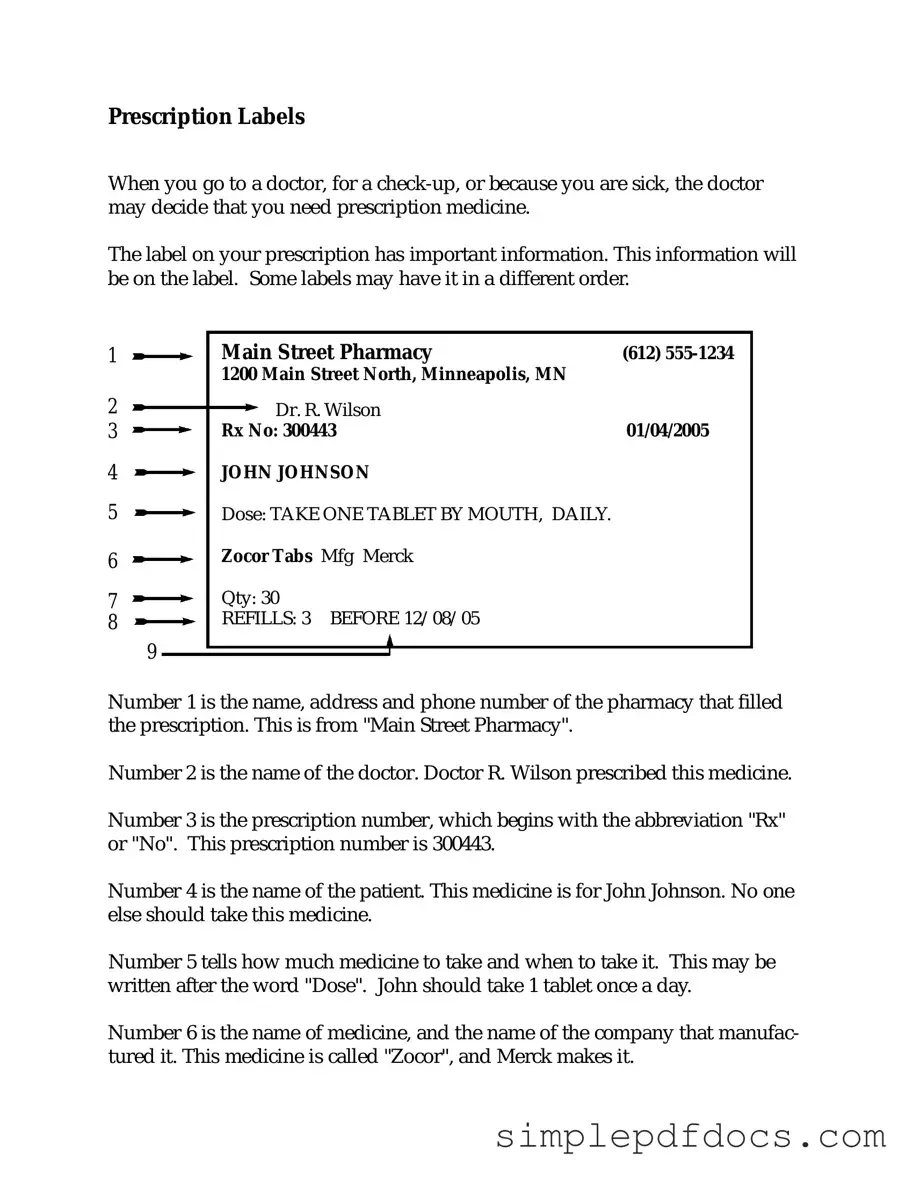The Prescription Label form is an essential tool for both healthcare providers and patients, ensuring clarity and accuracy in medication management. This form typically includes vital information such as the patient's name, the prescribing doctor's details, medication name, dosage instructions, and refill information. It serves as a guide for patients, helping them understand how to take their medications safely and effectively. Additionally, it often contains warnings about potential side effects and interactions with other drugs, promoting informed decision-making. By standardizing the information presented, the Prescription Label form plays a crucial role in reducing medication errors and enhancing patient safety. Understanding its components can empower patients to engage actively in their healthcare, fostering better communication with their providers and ultimately leading to improved health outcomes.
